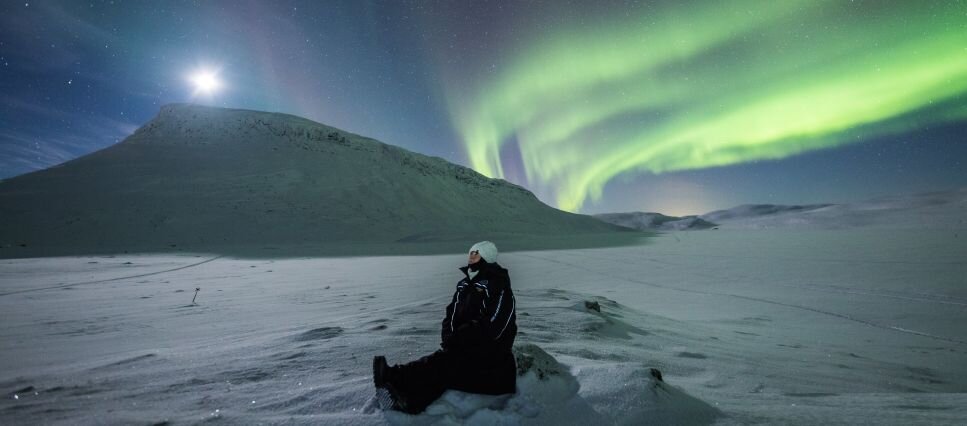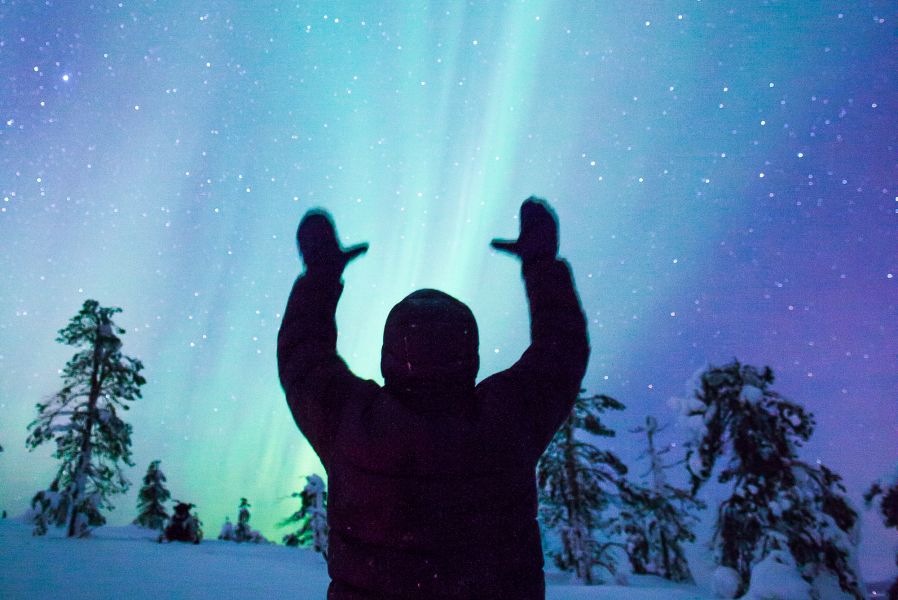“There is no such thing as the wrong weather, just the wrong clothes.”
There's a lot of truth to the old saying above, widely used by lovers of the great outdoors. The right clothing makes all the difference between comfort and discomfort, a great time and a less-than-perfect experience.
Most often seeing the Northern Lights means heading a good, long way north. The most reliable place to experience them is above the Arctic Circle, and that means it's never very warm. But you're not there for the sunshine, you're there to see one of the most remarkable natural phenomena known to the human race, one of the most fabulous sights on Earth. And because the lights usually only appear in winter, the chill is an integral part of the package, part of the fun.
If you're travelling to the Arctic Circle to see the aurora, what are the most suitable things to wear? Here's what you need to know about the weather and clothing, plus some handy tips to keep extra warm.
_w=1240_h=500_pjpg.jpg?v=202509161525)
The weather in Lapland
How chilly is it winter? Lapland is within the Arctic Circle, bordering Norway, Finland itself, Switzerland and Russia. And that means the climate that falls somewhere between subarctic and continental.
While the summers in Lapland are relatively mild, winter is invariably very cold with lots of snow. Lapland itself isn't quite as chilly as other places this far north thanks to Finland's warming North Atlantic Current, the Baltic Sea itself and the Gulf Stream, which isn't far away and also warms up the land and seas around the west of Britain and Ireland.
The frost and snow gradually arrives from September onwards, and by October there's an 18% chance of snow at any given time. The permanent snow sets in during December or January and while the Scandinavian Mountains tend to mean there are fewer storms and less rain than you might expect, locally, on a small scale, the winter weather can be extremely hard to predict. All this means you need the right clothing.
Some special clothing is provided
On all our Lapland tours we include the loan of thermal all-in-one snowsuits for you to wear along with boots. In addition, you’ll need to think carefully about the clothing you take on the trip.
Northern Lights tour clothing recommendations
As every outdoor pursuits fan knows, layering is one of the simplest and best ways to stay warm in extremely low temperatures. Starting with a thin layer against your body then working outwards with progressively thicker layers is the most effective way to trap lots of lovely warm air between your layers, acting very much like a wetsuit.
You also need to bear in mind that getting sweaty inside your clothing can leave you at more risk of the cold – even of hypothermia - than staying dry, so it's important to get the balance right. Here's some sensible advice.
• Mittens are amazing, much more effective at keeping you warm than fingered gloves. As long as you don't need to do anything fiddly, they're perfect. But you can always put a fingered pair on underneath for the best of both worlds, so you can take off your mitts and operate your camera or whatever and still stay warm. It's all about making layers work hard for you.
• Hats are a must. You don't actually lose 30% of your body heat through your head. That's an old wives tale. But you can soon feel very cold indeed when your head is exposed to the elements. Get yourself a thick lined hat that's windproof as well as warm. Make sure it's a good fit and can't blow off. If it's particularly cold or windy out there, a face mask or balaclava will help keep your entire face warm.
• If it's bright and sunny during the day you'll probably need good sunglasses, since the fierce glare from the snow can easily give you temporary snow blindness.
• If you spend a lot of time outdoors you'll already know jeans are not very good at keeping you warm, especially when it's windy or wet. The air flows through the weave and leaves you feeling very uncomfortable. Wearing waterproof soft-shell trousers with thermal leggings, tights or both underneath is a much better way to remain warm.
• You might feel warm enough on the move but the moment you stop, it gets a lot chillier. Get yourself a really good insulated jacket, something nice and thick, big enough to fit layers underneath, featuring a large hood you can fit a hat or balaclava under, and pockets deep enough for gloved and mittened hands.
• Layering up your socks inside the specialist Arctic boots is important. Start with thin socks and add thicker layers on top, leaving enough room for the air trapped inside your boots, between the layers, to warm up like a wet suit. If you make your boots too tight, thanks to too many socks, then the cold will be able to seep in.
_w=1240_h=500_pjpg.jpg?v=202509161525)
6 hot tips to maximise the impact of your Arctic Circle clothing
1. Many people think wool tends to be warmer than synthetic fabrics. But there are some remarkable materials on the market that also work really well, including down, fleece and Capilene. The most important thing of all, fabric-wise, is to avoid cotton, which draws heat away from your body really quickly and leaves you chilled to the bone. Avoid everything made from cotton, including gloves, hats and socks.
2. The traditional Icelandic Lopapeysa is amazingly snug and warm. Go for a jumper style with a plain body and decorative yoke around the neck and shoulders, perhaps with a distinct Fair Isle look to it. You'll look cool in selfies.
3. Thermal tights and leggings come in different weights. Mid-weight is usually fine for everyday use in the Arctic, but for especially cold conditions wear heavyweight thermals.
4. Merino wool underlayers are brilliant, made from a type of wool that's especially warm and soft, perfect for next to your skin. Wear more than one, layering them up, and it's impressively effective.
5. If it gets unusually cold, you might want to add a scarf or neck warmer to the list above. And if it's super cold, a longer coat rather than a waist-level jacket prevents sneaky draughts from chilling your middle.
6. Do you tend to suffer from cold feet at the best of times? Battery-operated heated socks might be your best friend.
So now that you know what to wear, are you ready for the magic? The Aurora Borealis awaits you in all its glory, and we'll be delighted to help you find and book the perfect Lapland experience.
Find out more and book your magical Northern Lights tour here
Originally published 3 September 2018, updated 12 September 2024
